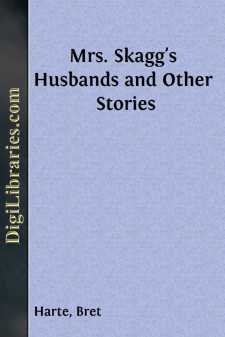Categories
- Antiques & Collectibles 13
- Architecture 36
- Art 48
- Bibles 22
- Biography & Autobiography 813
- Body, Mind & Spirit 142
- Business & Economics 28
- Children's Books 17
- Children's Fiction 14
- Computers 4
- Cooking 94
- Crafts & Hobbies 4
- Drama 346
- Education 46
- Family & Relationships 57
- Fiction 11829
- Games 19
- Gardening 17
- Health & Fitness 34
- History 1377
- House & Home 1
- Humor 147
- Juvenile Fiction 1873
- Juvenile Nonfiction 202
- Language Arts & Disciplines 88
- Law 16
- Literary Collections 686
- Literary Criticism 179
- Mathematics 13
- Medical 41
- Music 40
- Nature 179
- Non-Classifiable 1768
- Performing Arts 7
- Periodicals 1453
- Philosophy 64
- Photography 2
- Poetry 896
- Political Science 203
- Psychology 42
- Reference 154
- Religion 513
- Science 126
- Self-Help 84
- Social Science 81
- Sports & Recreation 34
- Study Aids 3
- Technology & Engineering 59
- Transportation 23
- Travel 463
- True Crime 29
The Exiles
by: Honore de Balzac
Categories:
Description:
Excerpt
ALMAE SORORI
In the year 1308 few houses were yet standing on the Island formed by the alluvium and sand deposited by the Seine above the Cite, behind the Church of Notre-Dame. The first man who was so bold as to build on this strand, then liable to frequent floods, was a constable of the watch of the City of Paris, who had been able to do some service to their Reverences the Chapter of the Cathedral; and in return the Bishop leased him twenty-five perches of land, with exemptions from all feudal dues or taxes on the buildings he might erect.
Seven years before the beginning of this narrative, Joseph Tirechair, one of the sternest of Paris constables, as his name (Tear Flesh) would indicate, had, thanks to his share of the fines collected by him for delinquencies committed within the precincts of the Cite, had been able to build a house on the bank of the Seine just at the end of the Rue du Port-Saint-Landry. To protect the merchandise landed on the strand, the municipality had constructed a sort of break-water of masonry, which may still be seen on some old plans of Paris, and which preserved the piles of the landing-place by meeting the rush of water and ice at the upper end of the Island. The constable had taken advantage of this for the foundation of his house, so that there were several steps up to his door.
Like all the houses of that date, this cottage was crowned by a peaked roof, forming a gable-end to the front, or half a diamond. To the great regret of historians, but two or three examples of such roofs survive in Paris. A round opening gave light to a loft, where the constable's wife dried the linen of the Chapter, for she had the honor of washing for the Cathedral—which was certainly not a bad customer. On the first floor were two rooms, let to lodgers at a rent, one year with another, of forty sous Parisis each, an exorbitant sum, that was however justified by the luxury Tirechair had lavished on their adornment. Flanders tapestry hung on the walls, and a large bed with a top valance of green serge, like a peasant's bed, was amply furnished with mattresses, and covered with good sheets of fine linen. Each room had a stove called a chauffe-doux; the floor, carefully polished by Dame Tirechair's apprentices, shone like the woodwork of a shrine. Instead of stools, the lodgers had deep chairs of carved walnut, the spoils probably of some raided castle. Two chests with pewter mouldings, and tables on twisted legs, completed the fittings, worthy of the most fastidious knights-banneret whom business might bring to Paris.
The windows of those two rooms looked out on the river. From one you could only see the shores of the Seine, and the three barren islands, of which two were subsequently joined together to form the Ile Saint-Louis; the third was the Ile de Louviers. From the other could be seen, down a vista of the Port-Saint-Landry, the buildings on the Greve, the Bridge of Notre-Dame, with its houses, and the tall towers of the Louvre, but lately built by Philippe-Auguste to overlook the then poor and squalid town of Paris, which suggests so many imaginary marvels to the fancy of modern romancers....




















